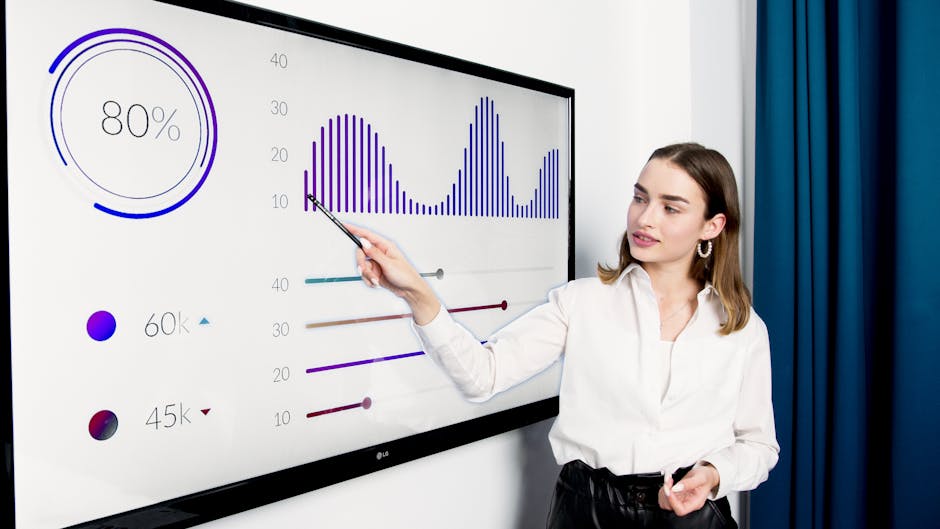How to Use Visual Storytelling to Enhance Your Content Marketing?

How to Use Visual Storytelling to Enhance Your Content Marketing?
Did you know that visuals are processed 60,000 times faster than text by the human brain? That’s right! In a world overflowing with content, visual storytelling can be your golden ticket to capturing attention and driving engagement. If you want your content marketing to stand out like a peacock in a flock of pigeons, it’s time to embrace the art of visual storytelling. Let’s dive into how you can weave visuals into your content marketing strategy and create a narrative that resonates.
Understanding Visual Storytelling
Visual storytelling is more than just slapping a few images onto a blog post. It’s about crafting a narrative that combines visuals and text to create a cohesive story. Think of it as a delicious sandwich: the visuals are the fresh ingredients, while the text is the bread holding everything together. When done right, this combination can evoke emotions, spark curiosity, and drive action.
Why Visuals Matter in Content Marketing
Visuals are not just pretty pictures; they serve a purpose. Here’s why they matter:
- Increased Retention: People remember 80% of what they see and do, compared to just 20% of what they read.
- Enhanced Engagement: Posts with visuals receive 94% more views than those without.
- Improved Shareability: Visual content is more likely to be shared on social media, expanding your reach.
In short, visuals can transform your content from forgettable to unforgettable. 🌟
Types of Visual Content to Consider
Now that you’re convinced of the power of visuals, let’s explore the types of visual content you can use:
- Infographics: These are perfect for distilling complex information into digestible bites. They combine data and visuals to tell a story at a glance.
- Videos: A short, engaging video can convey your message in a dynamic way. Think of it as a mini-movie that showcases your brand’s personality.
- Images and Photography: High-quality images can evoke emotions and create a connection with your audience. Use them to tell your brand’s story visually.
- Presentations: Slide decks can be a great way to share information in a structured format. They can be shared on platforms like SlideShare for added exposure.
Each type of visual content has its strengths. Choose the one that best fits your message and audience. 🎨
Crafting Your Visual Story
Creating a compelling visual story requires a bit of strategy. Here’s how to get started:
- Define Your Message: What do you want to communicate? Your visuals should align with your core message.
- Know Your Audience: Tailor your visuals to resonate with your target demographic. What do they find appealing?
- Use Consistent Branding: Maintain a consistent style, color palette, and tone across all visuals to reinforce your brand identity.
- Incorporate Emotion: Use visuals that evoke feelings. Whether it’s joy, nostalgia, or curiosity, emotions drive engagement.
Remember, your visuals should complement your text, not overshadow it. They should work together like a well-rehearsed duet. 🎤
Real-World Examples of Visual Storytelling
Let’s look at some brands that have nailed visual storytelling:
- Airbnb: Their use of stunning photography showcases unique accommodations and experiences, inviting users to dream about their next vacation.
- National Geographic: Known for breathtaking visuals, they tell stories about nature and culture that captivate audiences worldwide.
- BuzzFeed: They use infographics and quizzes to engage users, making information fun and shareable.
These brands show that when visuals are used effectively, they can elevate a brand’s narrative and create a lasting impact.
Tools for Creating Visual Content
You don’t need to be a graphic designer to create stunning visuals. Here are some user-friendly tools to help you get started:
- Canva: A versatile design tool that offers templates for infographics, social media posts, and more.
- Adobe Spark: Create graphics, web pages, and videos with ease, even if you have no design experience.
- Piktochart: Perfect for creating infographics and presentations that are visually appealing and informative.
- Animoto: A video creation tool that allows you to turn photos and video clips into professional-looking videos.
These tools can help you unleash your creativity without breaking the bank. 💰
Measuring the Impact of Visual Storytelling
Once you’ve implemented visual storytelling, it’s crucial to measure its effectiveness. Here’s how:
- Track Engagement: Monitor likes, shares, and comments on your visual content to gauge audience interest.
- Analyze Traffic: Use tools like Google Analytics to see if visual content drives more traffic to your site.
- Monitor Conversion Rates: Check if visuals lead to higher conversion rates, such as sign-ups or purchases.
By analyzing these metrics, you can refine your strategy and create even more compelling visual stories in the future.
Conclusion
Visual storytelling is a powerful tool in content marketing. It captures attention, enhances engagement, and drives action. By understanding your audience, crafting a compelling narrative, and using the right tools, you can elevate your content to new heights. So, go ahead and sprinkle some visual magic into your marketing strategy. Your audience will thank you! 🚀




